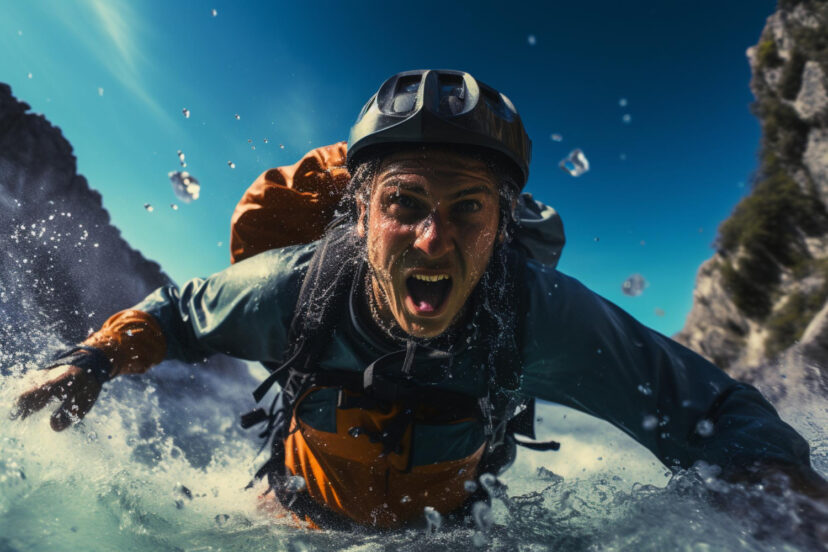Adrenaline Adventures: 8 Top Picks for Thrill-Seekers
Do you feel that? That little flutter in your chest when you think about standing at the edge of a cliff. The way your palms get sweaty just imagining free-falling through the air. The smile that creeps across your face when you picture yourself conquering the impossible with these 8 top Adrenaline Adventures.
If you’re nodding right now, you’re one of us—a thrill-seeker, an adrenaline junkie, a person who lives for that heart-pounding moment when fear and excitement become indistinguishable.
The Science Behind the Rush: Why We Crave Adrenaline
Before we dive into the adventures themselves, let’s talk about what’s happening in your body when you take that leap of faith.
When you face a perceived threat or extreme challenge, your body releases adrenaline (epinephrine) and noradrenaline. These hormones trigger your “fight or flight” response, increasing your heart rate, heightening your senses, and giving you that euphoric feeling we’ve come to know as an “adrenaline rush.”
Studies show that controlled exposure to this state can actually be beneficial—reducing stress, increasing focus, and even potentially prolonging your life by creating a sense of meaning and accomplishment. So these Adrenaline Adventures aren’t just thrilling—they might just be good for you too!
Now, let’s get to the good stuff.
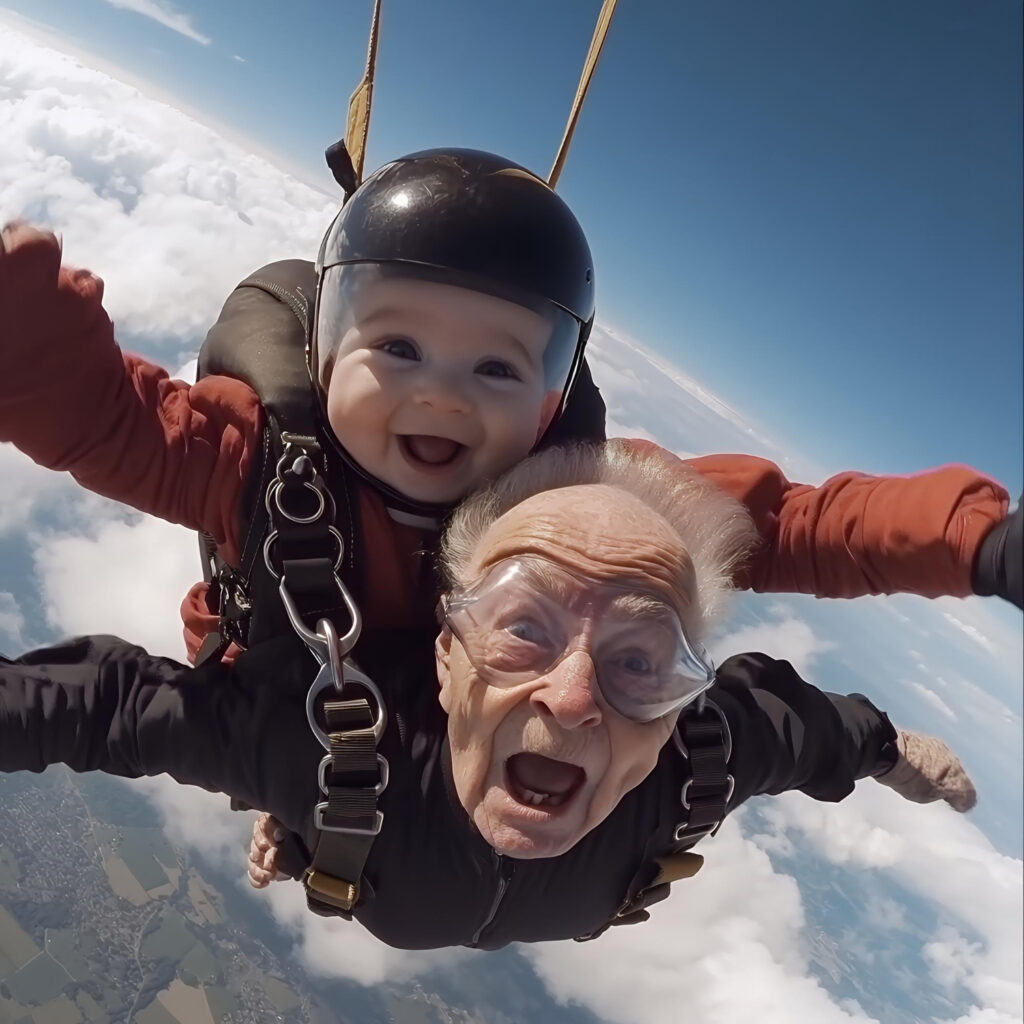
1. Skydiving: Conquering the Ultimate Free Fall
There’s a reason skydiving tops nearly every list of Best Adrenaline Adventures. Nothing quite compares to the moment when you’re sitting at the open door of an aircraft, wind whipping past, as your instructor gives the final countdown: “3…2…1…GO!”
The Experience Breakdown
Your first time skydiving will likely be a tandem jump, where you’re harnessed to a certified instructor. After a brief training session, you’ll board a small aircraft and climb to jump altitude—typically between 10,000 and 15,000 feet.
The journey unfolds in three distinct phases:
- The Exit: The most mentally challenging part for beginners. You’re leaving the perceived safety of an aircraft for… nothing. Just air. Your brain will scream that this is a terrible idea. Ignore it.
- The Free Fall: As you plummet toward Earth at approximately 120 mph, time simultaneously seems to slow down and speed up. The sensory overload is complete—the roar of wind, the pressure on your face, the surreal bird’s-eye view. This phase lasts about 60 seconds from 14,000 feet.
- The Canopy Ride: Once your instructor deploys the parachute (around 5,000 feet), sudden silence replaces the wind’s roar. Now you can catch your breath, take in the spectacular views, and enjoy a peaceful 5-7 minute descent to the landing zone.
Pro Tip
Schedule your jump for early morning when winds are calmest and visibility is best. This maximizes both safety and photo opportunities.
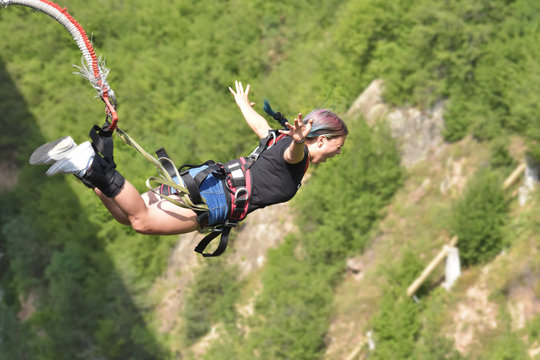
2. Bungee Jumping: The Original Leap of Faith
If skydiving feels like too big a commitment for your first extreme adventure, bungee jumping delivers a concentrated dose of adrenaline in just a few seconds of heart-stopping action.
Why It Remains One of the Best Adrenaline Adventures
The psychological challenge of bungee jumping is what makes it special. Unlike skydiving, where an instructor can ultimately make the jump happen, with bungee, it’s all you. You have to consciously override every survival instinct your body has evolved over millennia and step off that platform.
That moment—standing at the edge, toes curled over, looking down at what seems like certain death—creates a unique psychological state that adrenaline enthusiasts become addicted to conquering.
The Physics of the Perfect Bounce
A quality bungee experience comes down to the “bounce factor.” The ideal cord should stretch to about 1.5 times its original length under your weight, creating that signature rebound that sends you flying back upward after the initial plunge.
Modern bungee systems use latex or rubber cords that are meticulously calculated based on jumper weight, jump height, and desired bounce intensity. Jump operators typically add a safety margin of at least 30% beyond the minimum requirements.
First-Timer Advice
Don’t look down while you’re preparing to jump—look at the horizon instead. When you’re ready, dive forward (don’t step) for the cleanest entry and best experience.
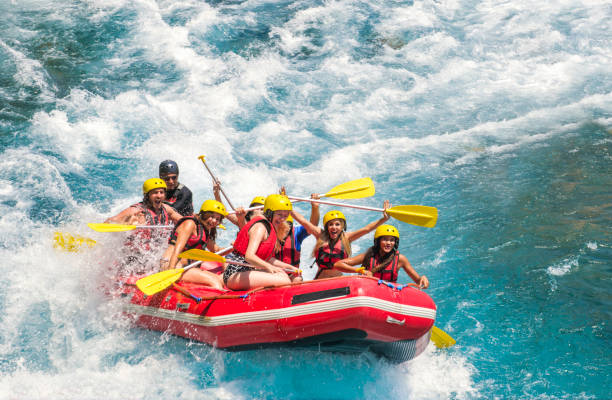
3. Whitewater Rafting: Team-Based Adrenaline
Not every great adventure requires falling from great heights. Whitewater rafting delivers collective adrenaline that’s as much about teamwork as it is about facing nature’s fury.
Understanding the Rapids: The International Scale
Whitewater rapids are classified on a six-point scale:
- Class I: Easy, gentle flows with minimal obstacles
- Class II: Basic rapids with straightforward maneuvers
- Class III: Moderate rapids with irregular waves requiring complex maneuvers
- Class IV: Powerful rapids requiring precise navigation and excellent paddling skills
- Class V: Extremely difficult, violent water with highly technical requirements
- Class VI: Borderline unnavigable; attempt only with expert teams
For maximum adrenaline, look for expeditions featuring Class IV and V rapids, but only after building experience on less challenging waters.
What Makes Rafting One of the Best Adrenaline Adventures
Whitewater rafting creates a perfect anxiety cocktail: you’re simultaneously fighting against and working with a powerful natural force. The river doesn’t care about your plans—it’s constantly changing, requiring split-second decisions and perfect synchronization with your team.
Add in the physical exertion of paddling, the disorientation of being splashed and sometimes fully submerged, and the confined space of the raft, and you’ve got a recipe for sustained adrenaline that few other adventures can match.
Safety First
Unlike some solo adrenaline sports, rafting success depends on group coordination. Always listen carefully during safety briefings and practice the commands before hitting serious rapids.
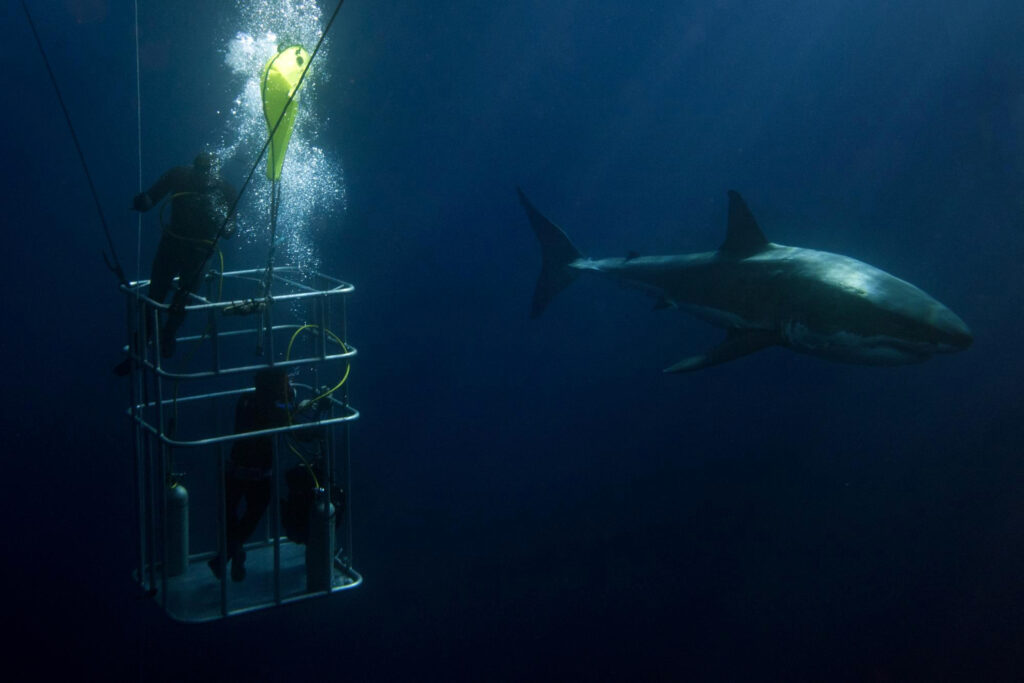
4. Shark Cage Diving: Face-to-Face With Apex Predators
Few experiences trigger our primal fear responses like being separated from a Great White shark by nothing more than steel bars. That’s precisely what makes shark cage diving one of the Best Adrenaline Adventures for those seeking psychological thrills.
The Predator Encounter Experience
A typical shark cage diving expedition begins early morning when shark activity is highest. After a safety briefing, you’ll board a specialized vessel and head to known shark territories—usually areas with seal colonies that attract these magnificent predators.
Once sharks are spotted, the crew will deploy a cage partially submerged in the water, and divers rotate through in small groups. No scuba certification is needed; you’ll breathe through a surface-supplied regulator while in the cage.
The experience of seeing a 15-foot, 2,000-pound apex predator materialize from the blue void, investigating you with cold, calculating eyes, triggers an instinctive fear response that evolution has hardwired into our brains. The cage’s protection makes this fear controllable, creating the perfect adrenaline balance.
Environmental Consideration
Choose operators that practice responsible tourism. Ethical shark encounters use minimal chum, avoid feeding sharks directly, and contribute to conservation efforts studying these increasingly threatened animals.
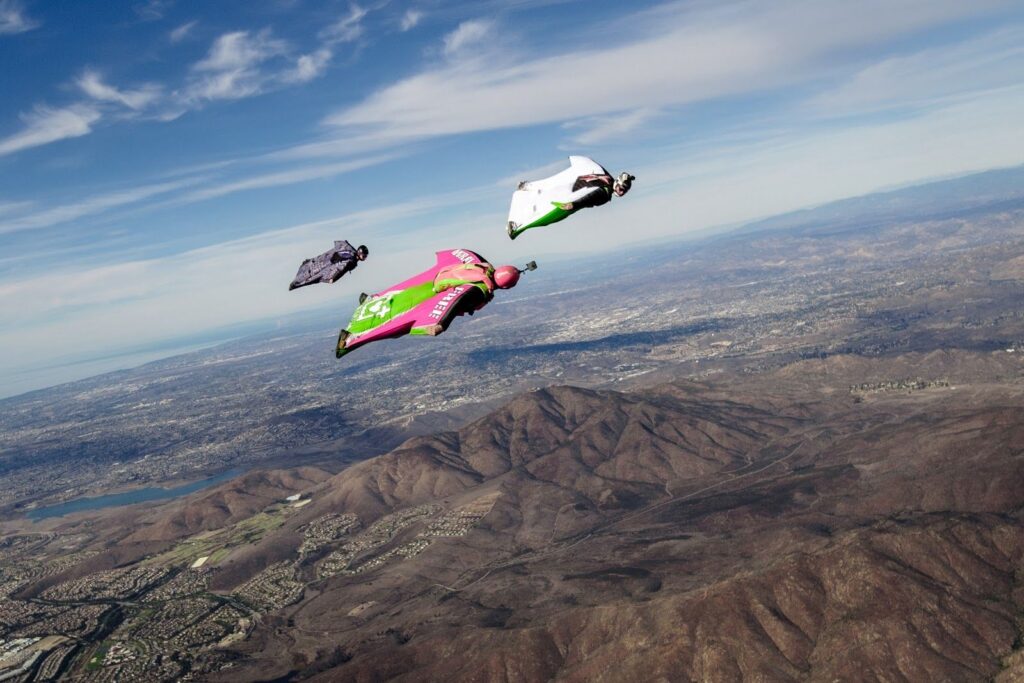
5. Wingsuit Flying: Human Flight Redefined
If you’ve mastered skydiving and hunger for the next level of aerial adrenaline, wingsuit flying represents the apex of human flight achievement. This technically demanding discipline transforms free fall into horizontal flight, allowing pilots to reach horizontal speeds exceeding 150 mph while controlling their trajectory with remarkable precision.
The Learning Curve
Wingsuit flying isn’t something you can try on a whim. The progression typically requires:
- At least 200 regular skydives before your first wingsuit jump
- Specialized wingsuit training courses
- Gradual progression through increasingly advanced suit designs
- Years of experience before attempting BASE jumps in a wingsuit
This investment makes the payoff all the sweeter. When you finally master wingsuit navigation, you’ll experience the closest approximation to actual flying that humans have achieved—a dreamlike state of controlled fall that ancient humans could only imagine.
Reality Check
Wingsuit flying ranks among the most dangerous sports in the world. If you’re serious about progression, find mentors and invest in proper coaching—this isn’t a sport for self-teaching.
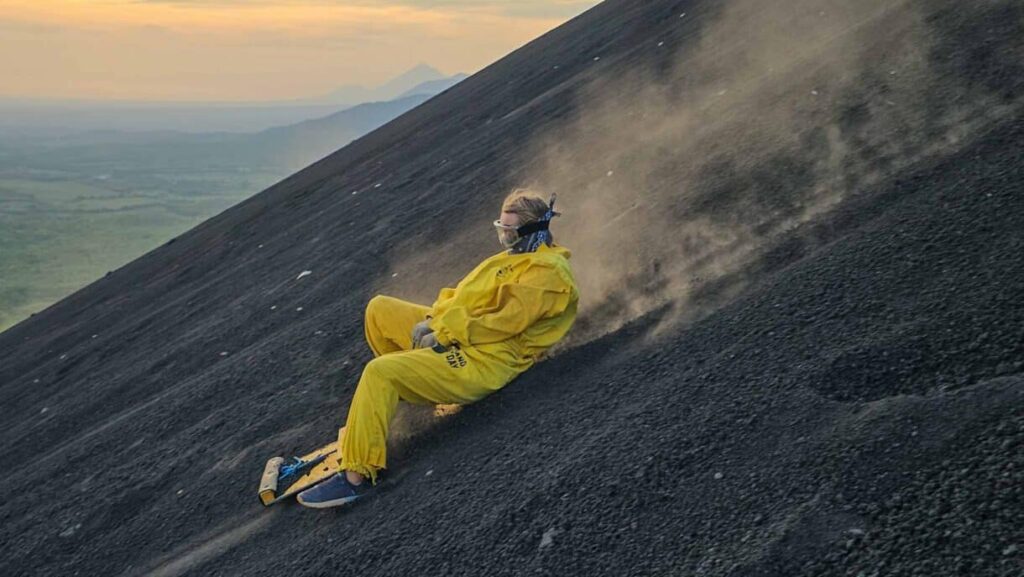
6. Volcano Boarding: Surfing Down Active Fire Mountains
How’s this for a unique entry in our Best Adrenaline Adventures collection? Volcano boarding combines the thrill of stand-up sledding with the surreal experience of descending an active volcano.
The Volcanic Surfing Experience
After a challenging one-hour hike to the crater rim of Nicaragua’s Cerro Negro volcano, you’ll strap protective gear over your clothes (including goggles, jumpsuits, and gloves), grab your wooden or metal-reinforced plywood board, and prepare for a volcanic thrill unlike any other.
The descent takes just minutes, but riders can reach speeds of 50 mph while navigating the steep, ash-covered slope. The fine volcanic material creates a unique surface that’s simultaneously slippery and high-friction—requiring constant weight adjustments to maintain control.
The real thrill comes from the knowledge that you’re sliding down something that could, theoretically, erupt at any moment. Cerro Negro last erupted in 1999 and remains active, adding an element of geological danger to the physical challenge.
What to Expect
Prepare to get dirty—very dirty. The fine volcanic ash gets everywhere, but the unique experience makes the clean-up worthwhile. Most riders fall at least once, so embrace the inevitable ‘Wipeout’ as part of the adventure.
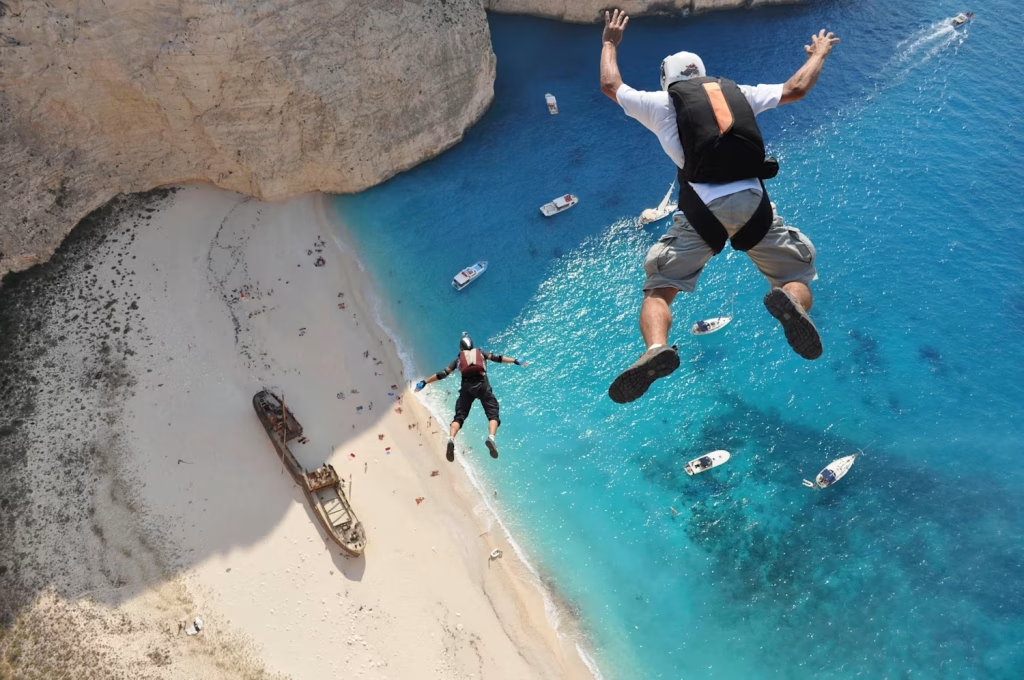
7. BASE Jumping: The Ultimate Adrenaline Commitment
No list of the Best Adrenaline Adventures would be complete without acknowledging the activity that represents the absolute pinnacle of extreme sports: BASE jumping.
The acronym stands for the four fixed objects jumpers leap from: Buildings, Antennas, Spans (bridges), and Earth (cliffs). What makes BASE jumping exponentially more dangerous than skydiving is the low altitude, which leaves almost no margin for error and minimal time to deploy a reserve parachute if something goes wrong.
The Psychological Challenge
BASE jumping requires mental fortitude beyond most other adventure sports. The countdown to a BASE jump involves standing at exit point, fully aware of the concrete, earth, or water awaiting below, with full knowledge of the statistical dangers, and choosing to jump anyway.
This moment—when fear and determination battle for control of your body—represents the purest adrenaline experience available. Jumpers describe a state of hyper-focus where the entire world reduces to the immediate task of execution.
The Reality of Risk
BASE jumping has the highest fatality rate of any extreme sport. Most experienced jumpers know colleagues who have died pursuing the activity. This isn’t mentioned to dissuade but to emphasize the commitment required—BASE jumping isn’t just an adventure; it’s a lifestyle choice.
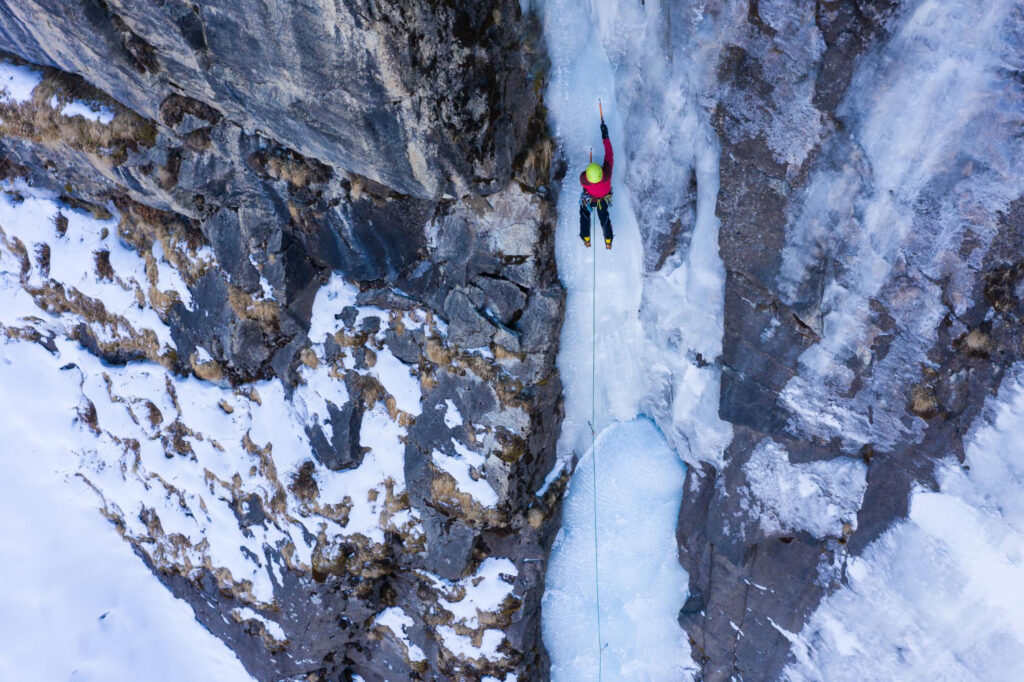
8. Ice Climbing: Vertical Frozen Conquests
For a different flavor of adrenaline that combines technical skill, physical endurance, and the raw power of nature, ice climbing delivers a unique thrill.
The Frozen Vertical Challenge
Unlike rock climbing, ice climbing involves scaling frozen waterfalls, glaciers, and ice-covered rock faces using specialized equipment like ice axes, crampons, and ice screws. The unstable, ever-changing nature of ice creates a dynamic challenge where no two climbs are ever identical.
The adrenaline stems from the combination of height exposure and the knowledge that your security depends on tools embedded in a frozen medium that can fracture unpredictably. Add in the physical demands of climbing in cold conditions, and you’ve got a full-body adrenaline experience.
Getting Started
Unlike some activities on this list, ice climbing is relatively accessible to beginners through guided experiences. Many locations offer single-day introductions where you’ll learn basic techniques on moderate ice under professional supervision.

Pushing Your Limits: Finding Your Personal Best Adrenaline Adventure
The beauty of adventure sports is their scalability—each activity can be tailored to your experience level and comfort with risk. Here’s how to find your perfect adrenaline match:
Assess Your Psychological Relationship with Fear
Some people thrive on height-based fears (making skydiving or bungee ideal), while others respond more to speed or physical challenge. Reflect on what specifically triggers your adrenaline response and seek activities that amplify that particular sensation.
Consider Your Physical Condition
Activities like ice climbing and whitewater rafting require significant physical strength and endurance. Be honest about your fitness level when choosing your adventure.
Start with Guided Experiences
Even the most extreme sports have entry points. Look for:
- Tandem skydives before solo jumping
- Bungee experiences before BASE jumping
- Guided climbs before solo expeditions
- Class III rapids before tackling Class V
Progression Is the Key to Sustained Thrills
The brain adapts quickly to repeated experiences, diminishing the adrenaline response over time. True adrenaline enthusiasts understand that progression—gradually increasing difficulty and challenge—is essential for maintaining that addictive rush.
Final Thoughts: Why We Need Adrenaline Adventures
In our increasingly controlled, safety-focused world, activities that trigger our primal responses fulfil something deeply human. The best Adrenaline Adventures aren’t just about thrills—they’re about connecting with our most authentic selves.
When you stand at the airplane door preparing to skydive, or at the edge of a bungee platform, all pretense falls away. Social status, career achievements, material possessions—none matter in that moment of pure presence. You are simply human, facing fear, making a choice.
This clarity—this distillation of existence to its essential elements—creates profound psychological benefits that extend far beyond the adventure itself. People who regularly engage in controlled risk-taking often report improved decision-making, enhanced stress management, and greater life satisfaction.
So which of these best Adrenaline Adventures calls to you? Which will be your first step into a larger world of controlled risk and incomparable reward? The only wrong answer is never finding out.
Now get out there and find your rush!

